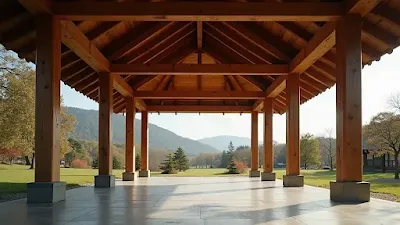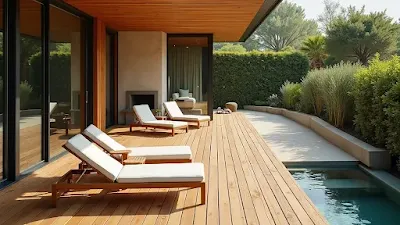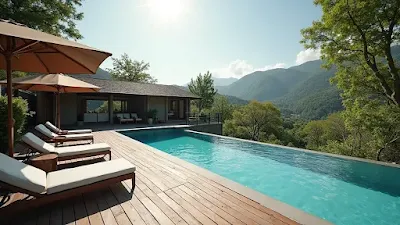Harnessing Power Tools for Optimal Deck and Frame Construction: A Comprehensive Guide
Building a deck or framing a house can be both exciting and overwhelming. Whether you are a seasoned contractor or a passionate DIYer, having the right power tools is essential for a successful construction project. This guide delves into essential power tools, focusing on saws and drills that you will need to create strong wood structures, with a special emphasis on building a backyard garage.
The Importance of Power Tools in Construction
Power tools have completely changed the way we handle construction projects. They allow for quicker and more accurate work compared to traditional hand tools. For example, using a circular saw can reduce cutting time by about 50% compared to manual saws. With the right tools, you can save time and produce higher quality results, which is crucial for outdoor structures like decks and garages where strength and durability are non-negotiable.
Essential Power Tools for Deck and Frame Construction
For any deck or frame construction project, having the right tools at your disposal is essential. Here are the most important tools you will need:
Saws
Saws play a critical role in any construction project involving wood. Here’s a breakdown of some commonly used types:
Circular Saw
A circular saw is highly versatile, ideal for making straight cuts in lumber. It is portable and can tackle different types of wood, making it a favorite among builders. For instance, this tool can be used to cut 2x4s for framing or plywood for decking.
Miter Saw
This saw excels at making angled cuts, which are especially useful for creating joints in decks. A miter saw can help create precise 45-degree angles for corner joints, ensuring that your deck is both attractive and functional.
Table Saw
A table saw is crucial for ripping larger sheets of wood into precise dimensions. This is especially important for preparing deck boards that require uniform thickness and width, which can affect the overall appearance and stability of your structure.
Drills
Drills are vital for fastening materials together and ensuring structural integrity.
Cordless Drill
A cordless drill is crucial for driving screws and performing light drilling tasks. With the freedom of movement it offers, you can easily reach tight spaces without dealing with cumbersome cords. It is invaluable for securing deck boards or framing components.
Hammer Drill
If you encounter tougher materials like masonry or concrete, a hammer drill is essential. This type of drill combines standard drilling with a hammering action, making it easier to penetrate hard surfaces. For instance, a hammer drill is perfect for installing anchors on concrete for a robust deck frame.
Prioritizing Safety: Essential Precautions
Safety should always be at the forefront when using power tools. Here are some key safety tips:
Wear Protective Gear: Always use safety goggles and earmuffs to safeguard your eyes and ears from debris and noise. Statistics show that over 30,000 eye injuries occur each year due to construction work.
Inspect Tools Regularly: Before use, always check your tools for any signs of wear and tear. Faulty equipment significantly increases the risk of accidents and injuries.
Follow Manufacturer Instructions: Each tool comes with specific operating guidelines. Read and understand these instructions to ensure safe usage.
Planning Your Project: A Case Study in Backyard Garage Construction
Let’s take a closer look at a practical example: building a backyard garage. A well-planned construction project not only facilitates smooth operations but also enhances the final results.
Layout and Design
Before you even pick up a tool, sketching out your garage design is crucial. Consider factors like size, door placement, and window designs. For example, a typical one-car garage often measures around 12x20 feet, while a larger two-car garage might be 20x20 feet or more. Visualizing your space helps you gather the necessary materials and tools.
Organizing Your Construction Site
An organized construction site can greatly improve workflow and productivity. Set up designated areas for tool storage, material staging, and waste disposal. Studies show that effective organization can improve efficiency by about 30%. This makes it easier to find tools and materials, ultimately saving you valuable time.
Step-by-Step Process for Building the Garage
Building a garage typically involves several fundamental steps:
1. Gather Materials
Start by creating a comprehensive list of required materials, including various types of lumber, nails, and necessary supplies. This list ensures that you have all your power tools ready for efficient work.
2. Prepare the Foundation
The foundation is key to stability. You might choose between a concrete slab or wooden pier foundation, depending on local regulations and soil conditions. Using your circular and miter saw, cut wood to the specified lengths for framing the foundation.
3. Frame the Structure
Once the foundation is set, use your circular saw and cordless drill to frame the garage. This includes constructing walls, floor joists, and roofing supports. A well-framed structure should be square and level to prevent future issues.
4. Install Siding and Roofing
With the frame in place, it’s time to install siding and roofing. Use your hammer drill for securing heavy-duty fasteners to keep everything in place. This step is crucial in protecting your garage from the elements.
5. Final Touches
Finish up your project by adding doors, windows, and any additional features that enhance the garage's functionality and aesthetics.
Maintaining Your Power Tools
To ensure longevity and peak performance, maintaining your power tools is necessary. Here are some practical maintenance tips:
Clean After Use: Cleaning tools after use removes wood dust, debris, and other materials that can cause damage over time.
Schedule Regular Maintenance: Regular maintenance checks can replace worn-out parts, ensuring that your tools always function properly.
Store Properly: Store tools in a dry location, preferably in a toolbox or on shelves, to protect them from the elements.
Final Thoughts
Integrating power tools into your deck and frame construction tasks can revolutionize your building experience. Understanding how to use saws and drills effectively will lead to better outcomes and help bring your construction vision to life.
Whether you are building a cozy backyard deck or a robust garage, the tools you choose have a significant impact on both productivity and the quality of your finished project. Take the time to select the right tools, plan carefully, and execute your work with precision. Start building your vision today!











.png)
.png)
.png)